Popular sport has fans from age 8 to 80
By Emmett Burnett
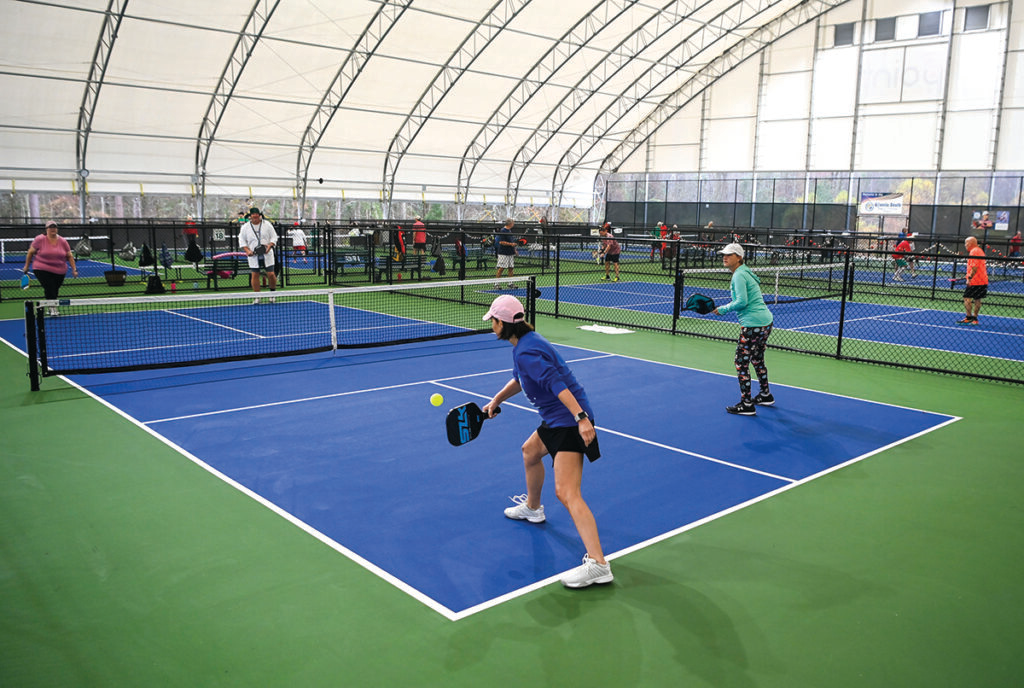
Doors open early at the Orange Beach Recreation Center – 8 a.m. By 9 a.m., courts are full. By 10 a.m., without a reservation, you wait in line. Tennis you say? Oh please, that is so yesterday.
These are the faithful, the dedicated, the legions united by pickleball, the thrill of the dill. “If I unlocked the doors at 7 a.m., they would be in here at 7 a.m.,” says Brenda Langston, pickleball attendant at the Orange Beach Recreation Center, which is served electrically by Baldwin EMC.
She unlocks the doors and a steady stream of enthusiasts enter to take the courts. One player rushes by, laughing, “Pickleball is not just a sport, it’s an addiction.”
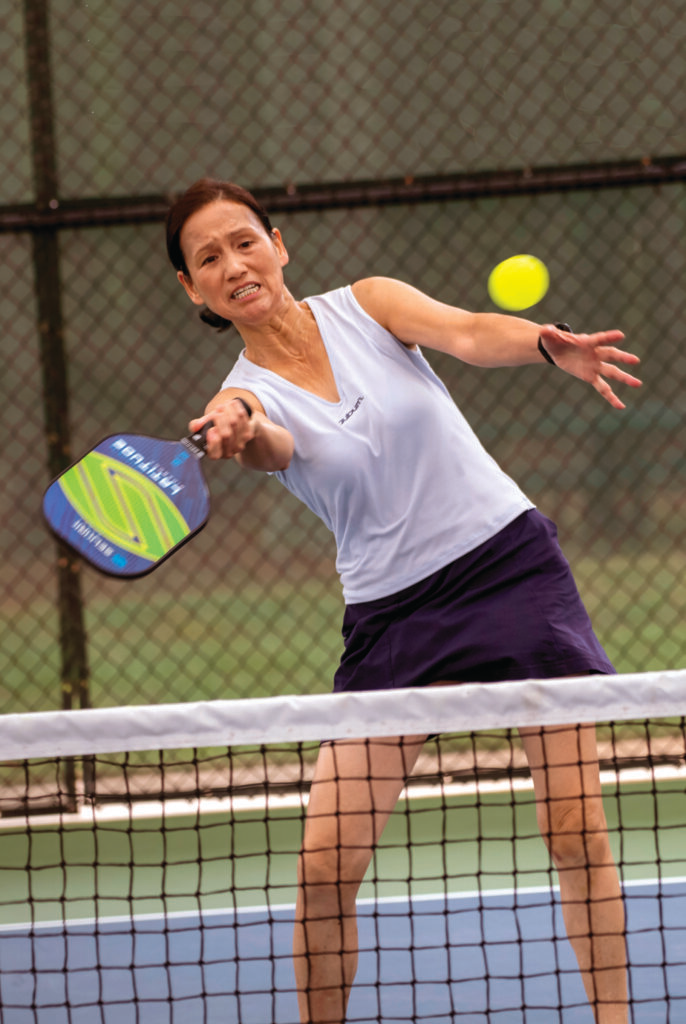
Indeed, the game of paddles and perforated plastic balls is one of America’s fastest-growing sports. According to the Sports and Fitness Industry Association, 4.8 million people are currently playing – doubling the number of five years ago. Alabama is no exception.
Johnathan Langston, Orange Beach Recreation Center’s director, says that since 2015, the center has logged 35,281 pickleball players here. The statistic would have been even larger had the complex not shut down during Covid months.
“In our center, pickleball is played more than all other sports combined. It is the biggest recreation program in Orange Beach’s history,” Langston says.
On today’s visit, 50 players are expected. In January with the arrival of Northern snowbirds, numbers swell to 100.
The beachside town is not alone in its passion for smacking a plastic ball with holes in it. Alabama is in a pickle – in a good way. Take the Opelika Pickleball Facility for example, one of the largest in the state.
Adjacent to the Opelika SportsPlex, the canopy-covered site features 24 courts and LED lighting, available 24 hours daily, Wednesday through Monday. Tournaments here have seen 800 participants.
As for everyday play, Opelika Public Relations Coordinator Laura Leigh Chesser notes, “I’ve seen severe weather and rainstorms with people playing pickleball here like nothing is going on. Anything short of a monsoon, our people will play pickleball.”
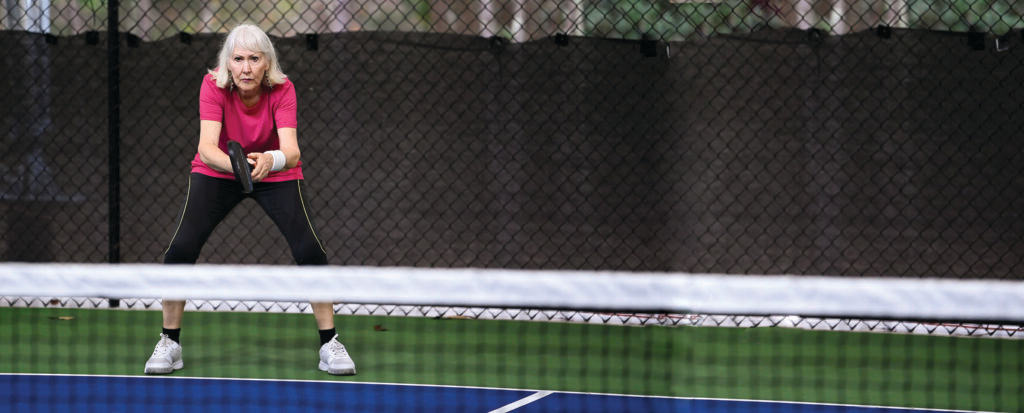
Though it appears to have erupted in popularity overnight, pickle ball passion is not new. The game is almost 60 years old. In 1965 the late Joel Pritchard and two friends returned to his Bainbridge, Washington, summer home after a day of golf. Pritchard found his family bored with nothing to do.
With help from two friends, he experimented with paddles, nets, racquets, and various balls to devise a family version of scaled-down tennis. One theory of how the game derived its name: During play at the impromptu net, the family’s dog kept chasing the ball. The dog’s name was “Pickles.” The rest is history.
Incidentally, the late Joel Pritchard had other accomplishments. Post pickle, he served in the U.S. Congress and later, as his state’s lieutenant governor. Outside of Washington, few know of his public service. However, everybody knows his game, some say named for the family’s pet.

Spreading eastward
From the Pacific Northwest, pickleball spread. “A California tennis pro told me about it six years ago,” recalls Wade Brown, Montgomery Country Club’s director of tennis. “My California colleague insisted, ‘You guys need to look into this! I am teaching more pickleball than I am tennis lessons!’”
Brown did his research. “Initially I considered pickleball to be like racquetball – a fad that fell off the face of the earth. But after studying and seeing how popular it had become in other areas, I realized pickleball is here to stay.”
He also credits country club members. “Many in our membership have resort homes in other areas,” Brown says. “They saw pickleball in their travels and returned to Montgomery, questioning how come we cannot have it here?” They do now.
Within a decade, the club grew from makeshift taped lines on a spare tennis spot to today’s service, including exclusive pickleball courts. “I’ve never seen anything like it,” Brown says. “We recently had 36 Indiana businessmen fly in; 26 of them wanted to play pickleball.”

When questioning the popularity of the sport, answers are as diverse as those who play it.
“Pickleball is a fairly simple game to play,” says Steve Lloyd, a pickleball pioneer of Gulf Shores and Orange Beach. “Lots of people play because it’s easy to learn and anybody can play it, from children to people in their 80s.”
Here is a pickle primer condensed in a paragraph: Like tennis, pickleball is a game for two or four players. One serves underhand and across the court. After the ball bounces once, the opponent smacks it back. The volley begins.
Complete rules can be easily found online or learned from other players. Other players also love to help newbies. For at one time, they, too, were new, just as a pickle was once a cucumber.
“Don’t be scared,” says Jim Young, president of the Opelika Pickleball Club, with a current membership of 471. He advises the novice, “Once the basics are explained, you can be on the court in 5 to 15 minutes. Initially, you won’t be as good as experienced folks, but you will catch up.”
Young says, “I’ve been surpassed by players I taught and I’m happy for them. It doesn’t discourage me.”
Lloyd agrees. “Start with others who have never played,” the Orange Beach Recreation Center veteran notes. “You will be surprised at how fast you catch on.”
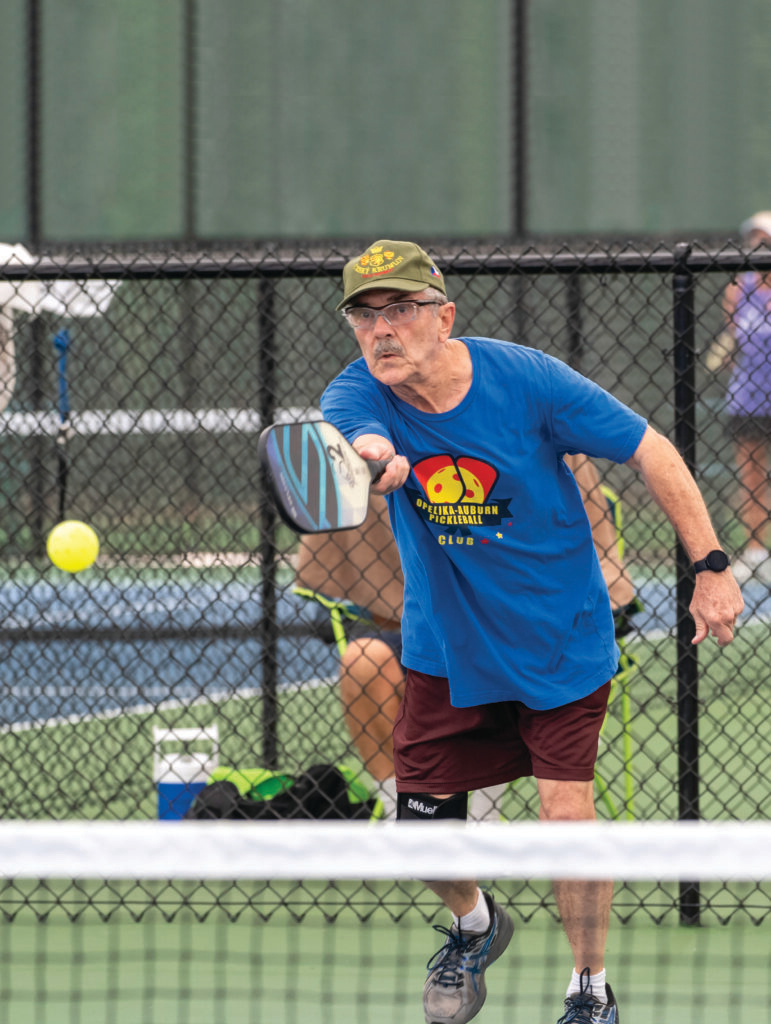
Working up a workout
The play is fun but make no mistake – this is a workout. “I had heart issues and for me running a treadmill was not motivating. Pickleball is fun exercise and also improves your hand and eye coordination,” says Lloyd, who is a competitive 72-year-old.
Brenda Langston agrees. “I recently had a pickleball player thank me. He said, ‘Before pickleball, I was on my way to becoming a couch potato.’”
The game is perhaps the most social sport in existence. Brown adds, “You can learn how to play in 20 minutes and be out on the courts. The only thing easier than learning the game is finding someone to play it with you. Everybody will.”
“You meet tons of people,” adds Mel Hopper of Orange Beach and a pickleball player of five years. “It is fun. The game can be competitive, a social occasion to be with friends, or both.”
Pickleball lends itself to socializing, as the court (44 feet by 20 feet) is much smaller than a tennis court (78 feet by 27 feet). Players are closer together, the volley is slower, and you tend to talk, getting to know each other.
“That’s the beauty of it,” says Bernie Gilliam, tennis and pickleball coordinator for Gulf Shores. “Grandparents can play the game with their grandkids.” Locally, they can play on state-of-the art courts.
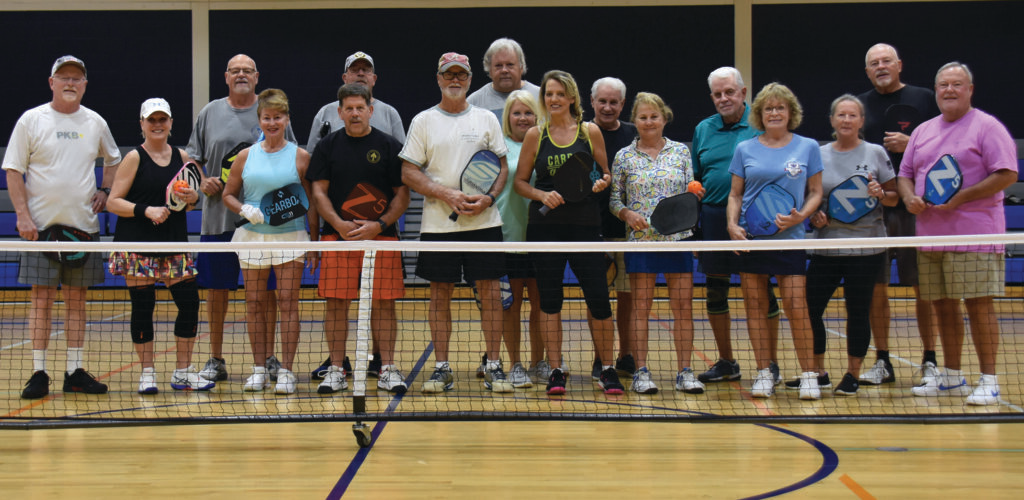
As of this writing, Gulf Shores was set to debut its new $780,000, 12 lighted pickleball courts. The site, part of the Gulf Shores Sportsplex, is open seven days a week, from sunrise to 10 p.m. “The demand is great,” Gilliam adds. “A mix of residents and tourists will use the new facility.”
Municipalities are seeing fiscal benefits too. “Opelika is one of the nation’s top pickleball destinations,” says Jim Young. “The city has invested a lot. The economic impact we give back to the city, state, local taxes, and our merchants in 2022 could be over $1.25 million.”
Fun, competitive, social, health benefits, fiscal opportunities, and more, whatever the reason, thousands are seizing paddles. Based on 2022’s growth, pickleball data indicates huge expansion statewide with new courts and new players.
There is power in the pickle. For in Alabama, pickleball is a game we relish.




